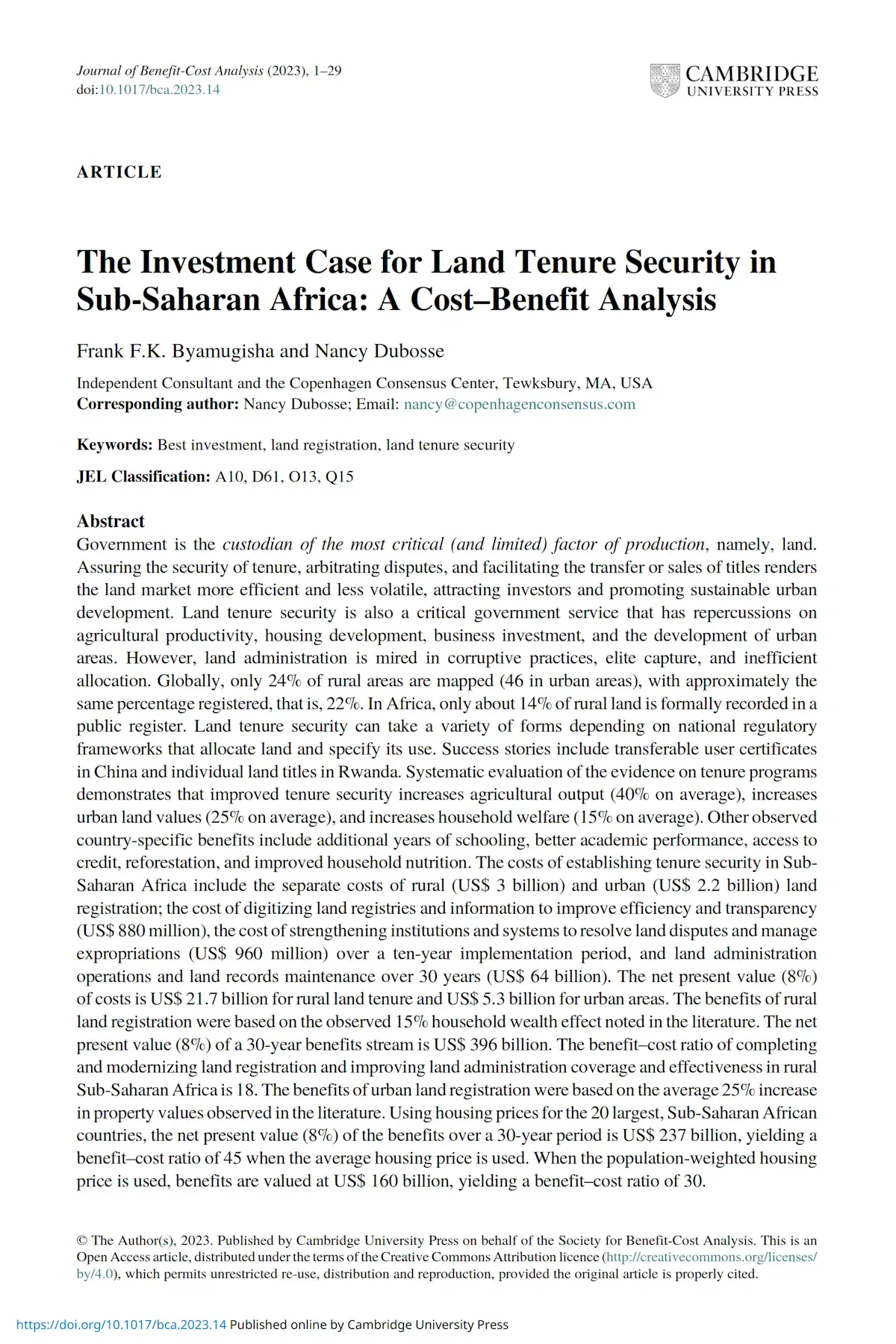Halftime for SDGs: Land tenure security
Best Investment Paper
Government is the custodian of the most critical (and limited) factor of production, namely, land. Assuring security of tenure, arbitrating disputes, and facilitating the transfer or sales of titles renders the land market more efficient and less volatile, attracting investors and promoting sustainable urban development.
Land tenure security is also a critical government service that has repercussions on agricultural productivity, housing development, business investment, and the development of urban areas. However, land administration is mired in corruptive practices, elite capture and inefficient allocation. Globally, only 24% of rural areas are mapped (46 in urban areas), with approximately the same percentage registered, i.e., 22%. In Africa, only about 14% of rural land is formally recorded in a public register.
Land tenure security can take a variety of forms depending on national regulatory frameworks that allocate land and specify its use. Success stories include transferable user certificates in China and individual land titles in Rwanda.
Systematic evaluation of the evidence on tenure programs demonstrates that improved tenure security increases agricultural output (40% on average), increases urban land values (25% on average) and increases household welfare (15% on average). Other observed country-specific benefits include additional years of schooling, better academic performance, access to credit, reforestation and improved household nutrition.
The costs of establishing tenure security in Sub-Saharan Africa include the separate costs of rural (US$ 3 billion) and urban (US$ 2.2 billion) land registration; the cost of digitizing land registries and information to improve efficiency and transparency (US$ 880 million), the cost of strengthening institutions and systems to resolve land disputes and manage expropriations (US$ 960 million) over a ten-year implementation period, and land administration operations and land records maintenance over 30 years (US$ 64 billion). The net present value (8%) of costs is US$ 21.7 billion for rural land tenure and US$ 5.3 billion for urban areas.
The benefits of rural land registration were based on the observed 15% household wealth effect noted in the literature. The net present value (8%) of a 30-year benefits stream is US$ 396 billion. The benefit-cost ratio of completing and modernizing land registration and improving land administration coverage and effectiveness in rural Sub-Saharan Africa is 18.
The benefits of urban land registration were based on the average 25% increase in property values observed in the literature. Using housing prices for the 20 largest, Sub-Saharan African countries, the net present value (8%) of the benefits over a 30-year period is US$ 237 billion, yielding a benefit-cost ratio of 45 when the average housing price is used. When the population-weighted housing price is used, benefits are valued at US$ 160 billion, yielding a benefit-cost ratio of 30.
The final peer-reviewed published article can be found here:


